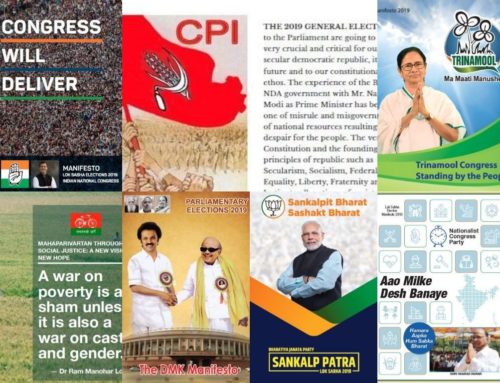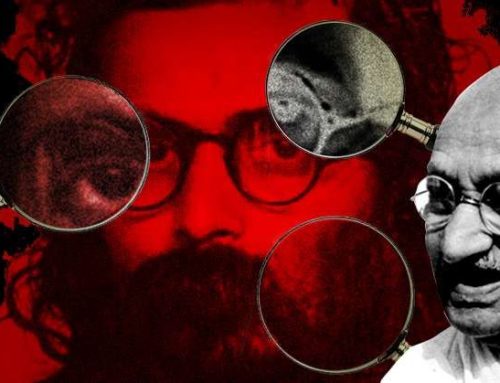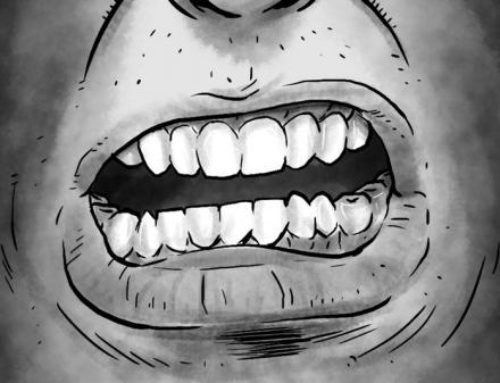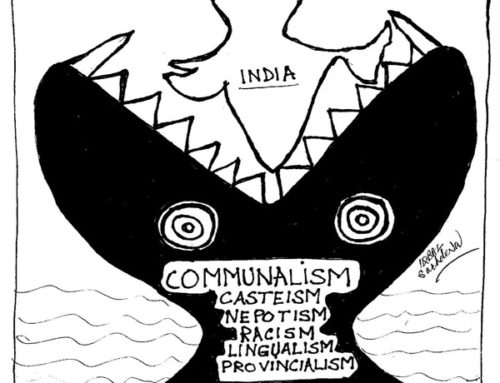Perspectives on women in the discourse of nationalism
Neha Dabhade
(Secular Perspective June 1-15, 2016)
The public discourse in India today is replete with discussions on nationalism. The actions of any individual and particularly of those who have a point of view that is different from that of the current political dispensation or establishment are termed as ‘anti-national’. There is, sometimes said and sometimes unsaid obligation to prove one’s love and loyalty for the country in the midst of competing nationalisms. With the suicide of Rohith Vemula, debates on nationalism and the location of caste in it came to the forth. Other marginalized groups like Muslims and Christians have been demonized by calling them “outsiders” and for forcible conversions. Their loyalty towards India is contested. Recently some called JNU a haven for ‘anti-nationals’ (Indian Express, 2016). While discussing nationalism vis a vis groups like Dalits, youth, minorities, it assigns the role of active subjects to them, giving them agency. However, women never figure as active subjects in the discourse of nationalism in India. Women, though not a monolithic group, always are on the periphery of the popular discourse on nationalism though they are predominantly accorded symbolic position in the narratives on nationalism. In many symbolical ways women are central to the discourse of nationalism. This also reflects their location in other spheres of public and private life where they have limited access to power and decision making. This seemingly contradictory status that women have can be better understood when one critically understands the meaning of nationalism and takes a historical stock of the treatment of women in India.
To begin, let us understand the concepts of nation and nationalism. Max Weber defined nation as a ‘community of sentiment which would adequately manifest itself in a state’. Benedict Anderson defined nation as an imagined political community – imagined as both inherently limited and sovereign (Benedict, 1983). It is limited because all the members of the nation will never know each other or interact with each other but will still hold dear a single collective ideal. It is an imagined community because it masks inequalities and exploitation in the community under the idea of horizontal comradeship in which the members of the community are willing to shed blood for the same. Gellner goes to an extent of saying ‘nationalism is not the awakening of nations to self-consciousness: it invents nations where they do not exist.’ Thus nation understood from these definitions is a collective or community holding certain aspirations for power.
Nationalism as an ideology is based on exclusion and masculinity. The construct of nationalism fosters national identity and cultural boundaries. Not all communities are represented equally in this national identity. Identities are often constructed through social contests which more often than not are violent in nature. Groups with power and privileges prevail over the marginalized and largely define national identity (synonymous with their own). Nationalism thus becomes oppressive and entails the process of ‘othering’ and creating a hierarchy.
Nationalism is gendered. Women have been historically excluded and discriminated against, having unequal access to decision making and resources in any nation. To demonstrate this I would like to quote some scholars. Cynthia Enloe states, ‘nationalism has typically sprung from masculinized memory, masculinized humiliation and masculinized hope’ (Nagel, 1998). Women have been relegated inferior positions where their contributions are invisibilized. Their roles have been gendered as defined by patriarchy – masculine and feminine. While society deems it masculine and ‘manlike’ for men` to fight wars or kill, women are vested with the honor of the family, community and nation that needs to be protected and kept undefiled. Their primary role that is symbolically depicted is that of motherhood. Yuval- Davis and Anthias (1989) have identified the following ways in which women participate in nation:
- As biological producers of members of ethnic collectivities;
- As reproducers of the normative boundaries of ethnic/national groups (by enacting proper feminine behavior)
- As participating centrally in the ideological reproduction of the collectivity and as transmitters of its culture:
- As signifiers of ethnic/national differences: and
- As participants in national, economic, political and military struggles (McClintock, 1993)
Nationalism and women in pre independence era:
The role of women in the freedom struggle of India and in nationalism in the face of colonial rule is a paradox of sorts. There is hardly any linear connection between women’s rights and freedom struggle. While women were exhorted to come out of their homes by national leaders like Gandhi to participate in the freedom struggle and make it truly a mass movement, their roles and extent of participation was also predetermined by cultural and patriarchal boundaries that sanctioned certain ‘feminine’ conduct creating a smoke screen of agency and autonomy.
Colonial power was opposed by Indians in different ways. While some groups were revolutionary, others believed in the constitutional means of negotiations with the British. Women contributed to all these struggles. Women like Kalpana Dutta were involved in bomb making and attacking the British. Lakshmi Swaminathan was an Officer of the Indian National Army. Sarojini Naidu was another leading woman in the national struggle who led delegation for adult franchise and freedom. There were women like Savitribai Phule who openly contested colonial patriarchy. Due to Gandhi’s emphasis on women’s participation, large number of women participated in Swadeshi movement, or the boycott of foreign goods, non-payment of taxes, picketing of liquor shops, and so on. However this is not adequate to understand the complex location of women in Indian freedom struggle. Women were always placed at the centre of politics in India colonizers justified their rule and policies citing the ‘backwardness’ of Indian society reflected in the plight of women and restrictions imposed on women in those times. Indian leaders responded in different ways to this according to their own strategies.
Some responded by trying to reform the social evils faced by women such as by arguing for widow remarriage, abolition of sati, abolition of child marriage amongst others by acknowledging that religion and other structures deny women these rights. Their understanding was that the better position of women, India will better demonstrate its capacity to govern itself. However there were some leaders who thought that raising the issue of women’s rights is divisive for freedom struggle and thus political freedom must precede social reforms. The revivalists argued that Indian tradition had accorded a position of power to women and meddlesome policies of the colonizers are destroying this superior culture and traditions. The need is to keep the ‘glorious’ tradition untouched and revisit it.
Debate between revivalists and Reformist:
The basis of the arguments of the revivalists in India and the world over is found in the dichotomy of the spiritual and material domains as enunciated by Partha Chatterjee (Chatterjee, 1989). Spiritual domain is the inner domain which is essential and superior. The material or outer domain is required merely for survival, expediency, and adjustments. It is however the spiritual domain that determines the identity of the nation. In this respect, the East was far superior from the West due to its rich spiritual traditions. The West though rich in technology and science which falls within the material domain is inferior to the East in respect to the spiritual richness. Women are repositories of the spiritual domain and thus their roles and duties must be untouched since they are a key to continued identity. This is also substantiated by Anne McClintock (McClintock, Family Feuds: Gender, Nationalism and the Family, 1993) while explaining that “natural division” of gender. Women have been represented as the atavistic and authentic “body of nationalism essentially inert, backward looking and natural, embodying the aspirations of the nation and a principle of continuity. On the contrary, men are forward thrusting and represent the principle of discontinuity. This argument never allowed the question of women’s rights and patriarchy to be addressed in an effective way.
Gandhi’s perspective:
Gandhi’s politics was deeply connected with religion. Gandhi, unlike Nehru, understood the significance and strength that the national movement would derive from the presence of women in large numbers as large number of women would make the movement truly a mass movement. He called women out in public spaces by urging them to participate in Swadeshi and Satyagraha movement. Women suddenly found themselves in public spaces earlier forbidden for them. However it is interesting to revisit the examples of the women he cited embodying virtues necessary for the freedom struggle. His icons were Draupadi, Sita and Savitri as opposed to Rani Jhansi who represented masculinized valor while the others exhibited feminine courage, patience, non violence and a resilient silent suffering- his ideals for a non violent freedom struggle (Rao, Woman-As-Symbol:Intersections of Indian Nationalism, Gender, and Identity, 1999). Gandhi overlooked that this went on to essentialize the same stereotypes that patriarchy attributes to women. Women through these attributes and examples were further embedded in institutionalized motherhood and inferior position in marriage.
Nehru’s perspective:
Nehru resented the presence of religion as a dominant force in lives of people in India and its influence on culture. Thus to a certain extent he underestimated its significance in Indian society. He was educated in West and envisaged Western-style democracy and modernization. In order to achieve this, upliftment of women was crucial. Thus Nehru introduced and passed the controversial 1955 Hindu Marriage Act and 1956 Hindu Succession Act in Parliament. He believed that the matter of critical importance was technology and progress to achieve social equality but issues like gender was not worthy of discussions in itself. He would not fully appreciate the role played by gender and religion in the political discourse in India, thus implementation of progressive laws has also been tardy. He never questioned the very root of oppression and patriarchy and women’s issues came up as per political convenience (Rao, 1999).
Being introduced to the values of democracy, equality and freedom, it was inevitable that women gained greater confidence and sense of organization during the national struggle. But the leaders and the movement were was unable to raise the issues of gender equality and overtly challenge patriarchal structures or sites of oppression like families for instance.
Nationalism and women today:
Religion, in postcolonial India, has emerged as a discursive totality that has subsumed the question of gender. The centrality of the narrative of gender, thus, becomes doubly displaced: once by nationalism in its purpose to integrate and secularize India as a modern nation and again by religion in order to re-construct India as a traditional Hindu nation.
As seen above, though Nehru championed a secular nationalism and envisaged a nation where technology and science will create enabling spaces for equality, he failed to understand that progressive laws alone can’t ensure progress or equality. The social roots of oppression like gender and communalism also had to be addressed. Secular nationalism, by not directly addressing issues of gender inequality and patriarchy but letting them be subsumed in the larger narrative of political freedom, spelled only limited emancipation for women. On the other hand, independent India witnessed communal violence and rise in communal politics. The existing marginalization of women further exacerbated with competing chauvinistic nationalisms. One such example is Hindu nationalism. The discourse of Hindu nationalism is based on the premise of exclusion and hatred towards minorities like Muslims and Christians and inferior status of Dalits, women and Adivasis. In its pursuit of Hindu Rashtra, it wants to present a unified front of the Hindus. In order to portray ‘Hindus’, as a monolithic group, the Hindu nationalists co-opt the Dalits and Adivasis and other religions like Sikhism, Jainism and Buddhism in the Hindu fold. It is quite ironic that still Dalit women are widely raped by upper caste men who consider it their right to have women from lower castes for gratification. Similar exercise of power can be witnessed when Adivasi women are violated.
The narratives of abduction of Hindu women by virile Muslim men and their savage violation have been a potent tool for mobilization of Hindus by the Hindu nationalists and clarion call for violence. Women are also time and again reminded that India is in danger from the by the multiplying Muslims and thus there is a need to restore India to its glorious past by citing examples of mythologized history and icons like Ram (ideal Indian man) and Sita (ideal Indian woman). While Sita, as seen above, upholds the virtue of sacrifice and chastity- feminine conduct, it is paradoxical when RSS and VHP mobilize women for armed training (allegedly for self defense against the enemy) and use other Hindutva icons like Sadhvi Ritambara and Sadhvi Prachi urging Hindu women to foster masculinized virtues like killing of the enemy (directed at Muslims and Christians). At the same time, this masked aggression is strictly looked down upon if exercised at homes. Hindu women are counseled to silently accept violence at the hands of fathers, brothers and husbands at home – in brief not to challenge gender hierarchy.
Hindu nationalism has come to dominate the public discourse especially after the rise of BJP in the Centre. Even when not in power it has shaped women’s ideology to limit their agency. For example, the campaign of “love jihad” was a ploy to demarcate national identity in the built up to May 2014 elections. By dictating who a woman can marry and who she cannot, as explained by Yuval- Davis and Anthias, she is compelled to reproduce normative boundaries, in this case a Hindu nation (Kandiyoti, 1991). Here a narrative is strengthened where the Muslims are demonized by being characterized as sexually predatory and virile, men who have historically defiled Hindu women. Under the pretext of ‘protecting’ Hindu women, who are traditional repositories of identities and honor, their bodies are being used as properties and reproducers to perpetuate the identities favoured by privileged upper caste males. Similar examples can be cited from South Africa, where white women were prohibited from having sex with men of other communities. In India too, inter caste marriages are forbidden for the same reasons.
Conclusion:
Nationalism is gendered. The role of women in nationalism has to be understood against the context which significantly shapes it. Though nationalism and national struggles in post colonial countries have been a starting point of discussion on the concerns of gender equality, this concern is mostly subsumed in the larger body of politics. As seen in Algeria to cite an example, after the revolutionary roles played by women during the freedom movement, they were compelled to return in the four walls of domestication and pushed within the boundaries sanctioned by traditions and sometimes strengthened by nationalism (16Ju).
***






